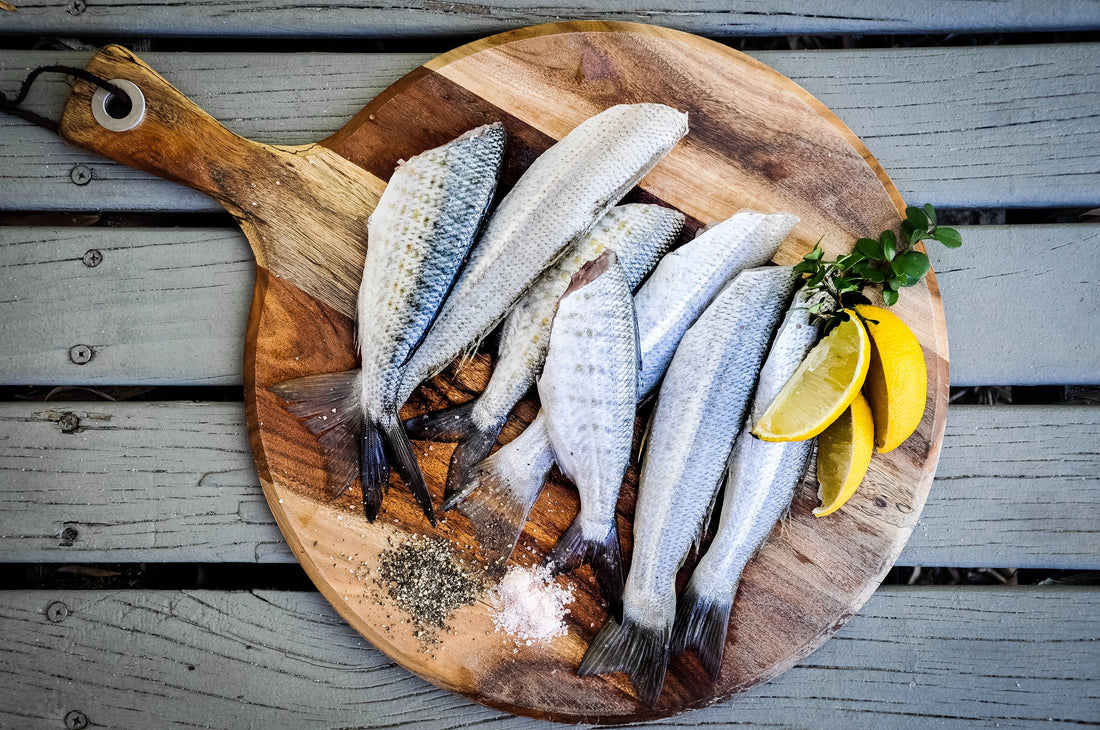
Mastering Fish Jerky: Dehydrator, Smoker, Oven & More
Chad MathewsShare
Can You Make Fish Jerky?
Fish jerky is an exciting culinary adventure that combines tradition with modern flavors. With its roots in coastal communities, this unique snack has gained popularity for its nutritional benefits, including high protein content and omega-3 fatty acids. The process of making fish jerky mirrors that of traditional meat jerky, allowing for a delightful exploration of flavors and textures.
Choosing the right fish is crucial for crafting the perfect jerky.
With a little creativity, fish jerky can become a gourmet treat that satisfies adventurous palates.
Why Try Fish Jerky?
Fish jerky offers a unique twist on traditional snacking, appealing to those seeking diverse flavors and textures. With its rich history in coastal communities, this delicacy has evolved into a gourmet treat, making it a must-try for adventurous eaters.
Packed with omega-3 fatty acids, fish jerky boasts numerous nutritional benefits. It provides a heart-healthy, protein-rich option that is often lower in saturated fats compared to beef or pork jerky, making it an excellent choice for health-conscious snackers.
The variety of fish available allows for an array of distinct flavors, from the robust taste of salmon to the milder notes of cod. Each type of fish brings its own unique profile, enhanced by marinades that elevate the jerky experience to new heights.
For pescatarians, fish jerky is a dream come true, offering a portable and delicious source of protein. With its long shelf life and innovative flavors, it ensures that those who prefer seafood can enjoy the jerky experience without compromise.
Choosing the Right Fish
When choosing the right fish for jerky, it's essential to consider texture and flavor. Lean fish like cod, halibut, and tuna are excellent choices due to their firm consistency and lower fat content, which ensures a longer shelf life. For those seeking a richer taste, salmon offers a robust flavor, though its higher fat content may shorten its longevity.
Quality is paramount in the jerky-making process, starting with the freshness of the fish. Proper storage is crucial if you can't prepare it immediately; vacuum-sealing or refrigeration can help maintain its quality. When ready to begin, cleaning and filleting the fish is vital, ensuring that any bones are removed and the fillets are uniform for even drying.
Marinades play a significant role in enhancing the flavor of fish jerky. A well-balanced marinade should complement the fish without overpowering its natural taste. Classic combinations, such as soy sauce with garlic and ginger, can infuse the fish with delightful flavors. The marinating process is relatively short, typically lasting between two to four hours, allowing for a quick yet flavorful infusion.
Preparing Your Fish
Preparing your fish for jerky-making is a crucial step that sets the foundation for a delicious final product. Start by selecting a firm, fresh fish, such as cod or salmon, ensuring it’s free from any impurities. Properly filleting the fish and removing any pin bones will enhance the texture and flavor, allowing the marinade to penetrate evenly and create a delightful taste experience.
Once your fish is prepped, the marinating process begins, where flavors meld and the curing process starts. A well-balanced marinade, perhaps featuring soy sauce, garlic, and a hint of citrus, can elevate your jerky to gourmet status. After marinating for a few hours, the fish is ready for drying, whether you choose a dehydrator, smoker, or oven. Each method offers unique flavors and textures, making the journey of crafting fish jerky an exciting culinary adventure.
Crafting the Marinade
Crafting the marinade for fish jerky is a delicate balance of flavor and preservation. A well-crafted marinade enhances the fish's natural taste while initiating the curing process. Classic ingredients like soy sauce, brown sugar, and garlic can be complemented with citrus zest and fresh herbs. The key is to marinate for just 2 to 4 hours, allowing bold flavors to infuse without overpowering the fish.Slicing Techniques
Slicing techniques play a crucial role in the fish jerky-making process, influencing both texture and flavor. Opting for uniform slices, typically around 1/8 to 1/4-inch thick, ensures even drying and a crispier outcome. Conversely, thicker slices, nearing 1/2-inch, yield a chewier texture reminiscent of traditional beef jerky, allowing for a personalized snacking experience.
The choice of fish also impacts slicing techniques, as firmer varieties like cod and halibut are easier to work with. Properly filleting the fish and removing any pin bones is essential for achieving the best results. With the right slicing approach, you can elevate your fish jerky, transforming it into a gourmet treat that showcases the unique flavors and textures of your chosen fish.
Methods for Drying Fish Jerky
Drying fish jerky is a fascinating process that combines tradition with modern techniques. The journey begins with selecting the right fish, ideally those with a firmer texture like cod or tuna, which dry well and offer a satisfying chew. Salmon, while richer, provides a unique flavor but has a shorter shelf life due to its higher fat content.
Once the fish is prepared, the next step involves marinating, which not only infuses flavor but also aids in preservation. A balanced marinade, such as a mix of soy sauce, brown sugar, and fresh herbs, enhances the fish's natural taste without overpowering it. The marinating time is crucial, typically lasting between two to four hours, allowing the flavors to penetrate effectively.
The drying method chosen significantly impacts the final product. Options include:
- Using a dehydrator for consistent results
- A smoker for a rich flavor
- An oven for accessibility
Each method has its unique benefits, and the drying time can vary from a few hours to several days, depending on the technique and thickness of the fish slices. Proper storage after drying is essential to maintain freshness, ensuring that your homemade fish jerky remains a delicious and nutritious snack.
